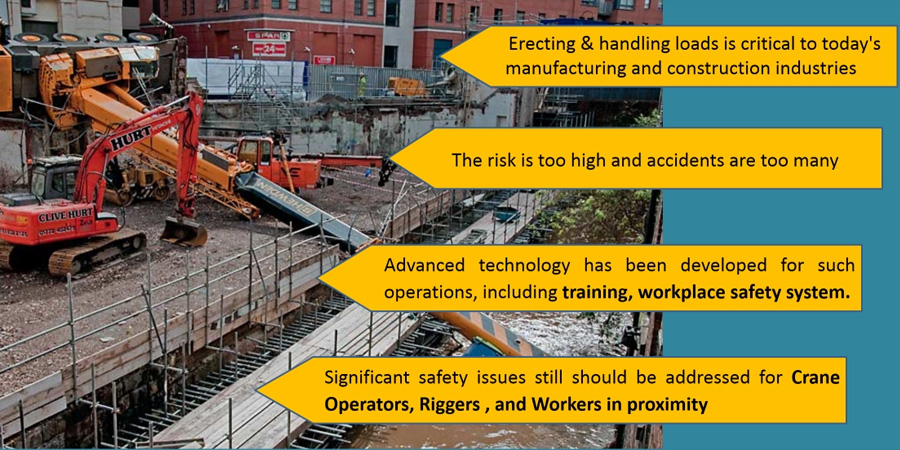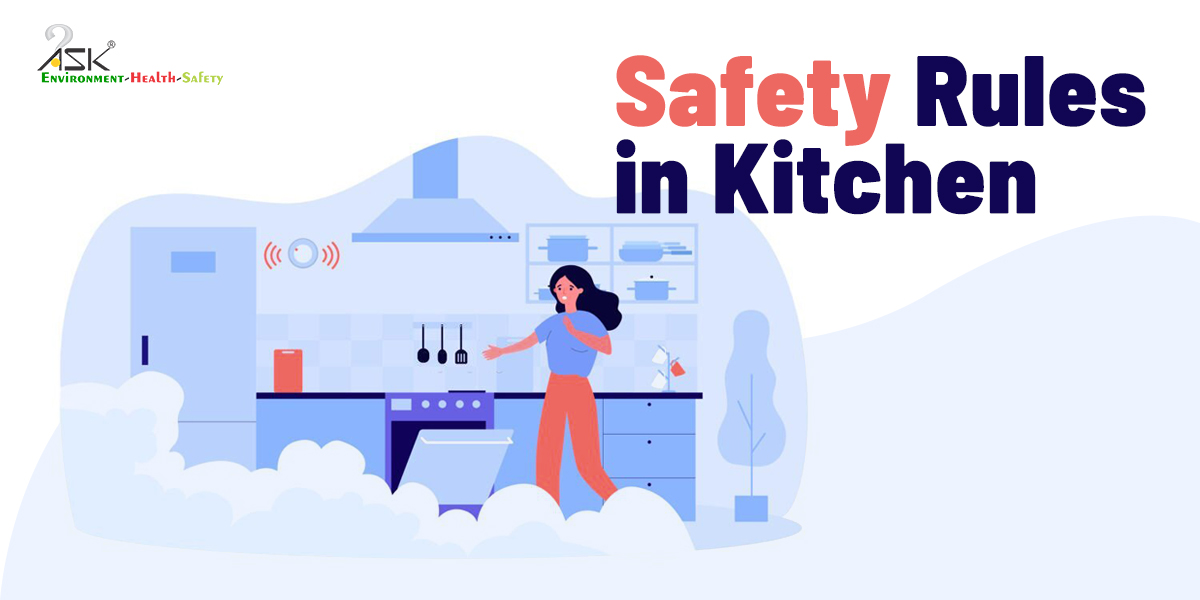Staying Safe in Construction

Crane operations are innate to many occupations in the construction sector. These operations can be performed both manually or using lifting equipment. Both mechanical and manual lifting operations can cause horrifying injuries to individuals and property, if safe, correct, systematic practices are not followed.
Handling and moving of loads (e.g. heavy materials to heights, securely from point A to point B with cranes and other devices) is defined as rigging. While opposing gravity to move this load from one position to another is lifting.
With rapid advancement in science and technology coupled with the global marketing competition as well as the stringent legal provisions, the captions of industries have become more proactive and sensitive to internalize due diligence and corporate accountability towards people, society and the environment.
This blog emphasizes on some of the basic hazards associated with rigging and lifting and measures to be taken care off.
Rigging and lifting job is more prone to accidents as the risk associated is higher. The person carrying out rigging task is required to pay close attention to details, as he is the last person in control of the load before being lifted. Whereas lifting equipment operator is the last person in control before the load reaches to its destination. One careless act can lead to serious injuries or even death and enormous property damage.
According to Health and Safety Executive, in Great Britain, the provisional figure for the number of workers fatally injured in 2014/15 is 142, and corresponds to a rate of fatal injury of 0.46 deaths per 100,000 workers.
Let’s have a glance at some of the hazards associated with rigging and lifting.
According to Occupational Safety and Health Administration (OSHA), majority of the fatalities and injuries occurring because of crane accidents can be prevented. Proper care needs to be taken, while setting up of crane, as more than 50% of all mobile crane accidents are attributed to this kind of mistakes. Necessary precautions and crane manufacturers do’s and don’ts needs to be strictly adhered while assembling and dismantling of crane.
Apart from this, other hazards associated with cranes include:-
Fall hazards which results due to:-
- Uneven, obstructive, wet and slippery working surfaces
- Incorrect use of portable ladder
- Bulkhead openings, unprotected sides, deck holes more than 5 ft.
Struck-by and crushing hazards owing to:-
- Defective or not properly inspected gear and equipment
- Moving parts and equipment
- Loads not safely rigged before being lifted, loads being suspended or swung overhead
- Improper use of tag line allowing hoisting material to swing out of control
- Hazardous locations between a swinging load and fixed object
Electrical hazards created by:
- Not properly grounded tools and equipment
- Usage of hauling and hoisting equipment near energized lines
- Faulty electrical tools and worn electric cables
Causes of failure:-
| Causes of crane Failure | Causes of human failure | Causes of sling failure |
|---|---|---|
|
|
|
TIPS FOR RIGGERS & RIGGING:-
| Riggers should be | Riggers shouldn’t be |
|---|---|
|
|
Now let’s have a glance at OSHA’s regulations envisioned to prevent rigging accidents.
- Proper & periodic inspection of rigging equipment’s before use and ensuring that it is safe.
- Remove rigging equipment’s from work when they are not in use
- Before beginning properly inspect the ground where rigging equipment’s are to be used
- Keep precise load, never overload rigging equipment
- Carefully examine steel chain slings which are in use
- Riggers should be well trained rigging materials, their proper usage and their resulting hazards
- Ensure proper use of PPE
- Maintain and ensure proper signaling procedures
With the above discussion we can summarize that awareness, knowledge & training plays a major role in rigging and lifting. Effective action should be taken to manage risks. Safe rigging of the load assumes high importance since rigging failures invariably causes major accidents. Training program for carrying out crane operations safely, should mainly focus on the practical aspects for all the relevant personnel’s to ensure safe supervision of work.



Thanks for information
This is a good article. It is a combination of fun and informative. Thanks for sharing this!
I’m glad you talked about crane operations and how they could easily go wrong! Recently, one of my cousins said he’s interested in investing in a construction project. My cousin needs to hire crane operators and wants to know more about how to avoid an accident, so I’ll be sure to share your article with him. Thanks for the information on crane accidents and how to prevent them.
Thanks a lot for covering an article about construction safety. It would be quite helpful to follow through with this to prevent accidents and ensure the safety of all the people working on-site, Great article by the way.